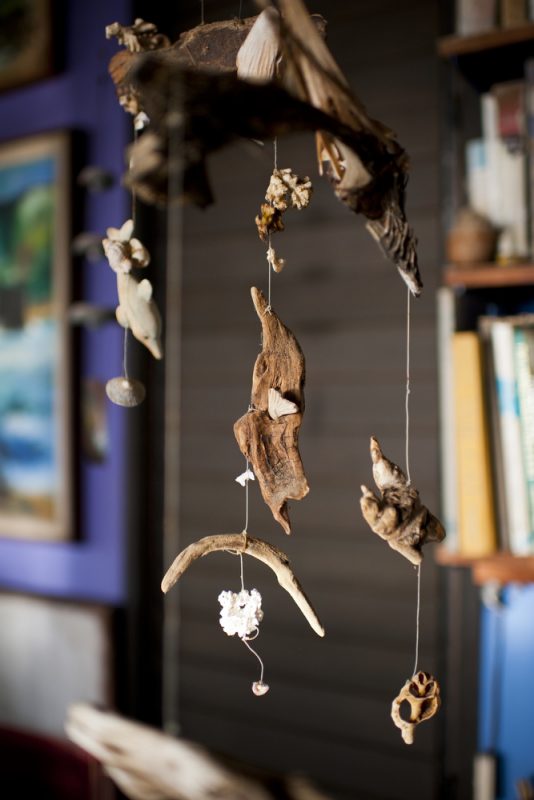Seeing Red
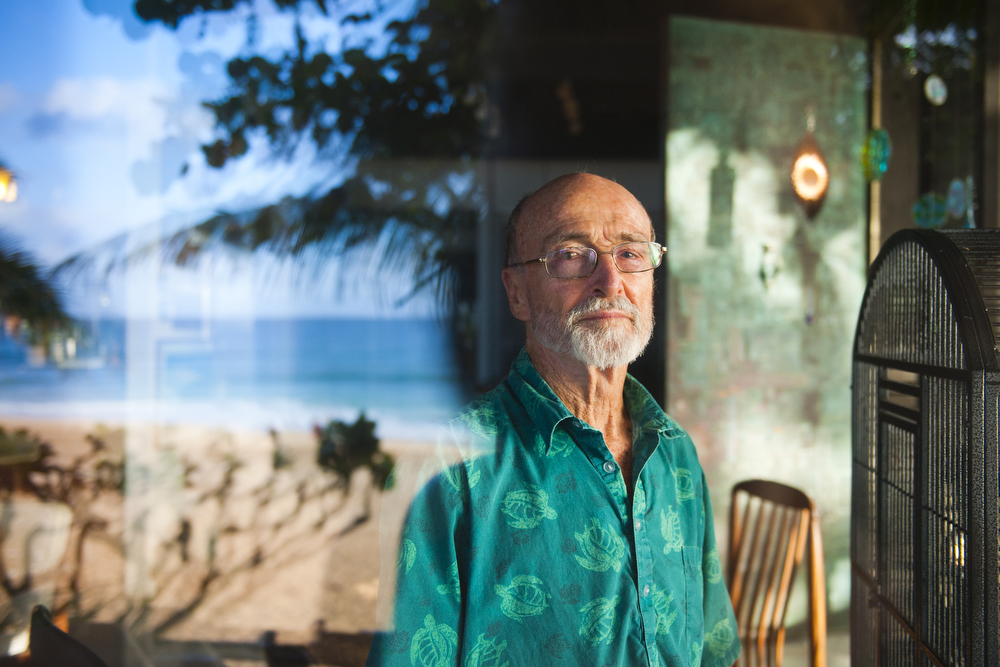
For more than half a century Warren Harlow has been watching Pipeline from his front porch, offering him a rare view of the wave’s potential for extreme violence.
By Alex Roth
The surfer with the cracked skull is an image that remains vivid in Warren Harlow’s mind, even after all these years. At first, it looked like the guy was bobbing in the water next to a red fishing net until Harlow realized the red was blood.
From the deck of his property, which overlooks Pipeline, one of the world’s most ferocious waves, Harlow dashed into the ocean and dragged the man to shore. His head injury was horrific. His girlfriend was going berserk. An ambulance rushed him to the hospital, where doctors saved his life and put a metal plate in his skull.
“In those days there were no lifeguards out here,” said Harlow, who is now 84 years old. “So unless you wanted to turn a blind eye, you had to kind of be one occasionally.”
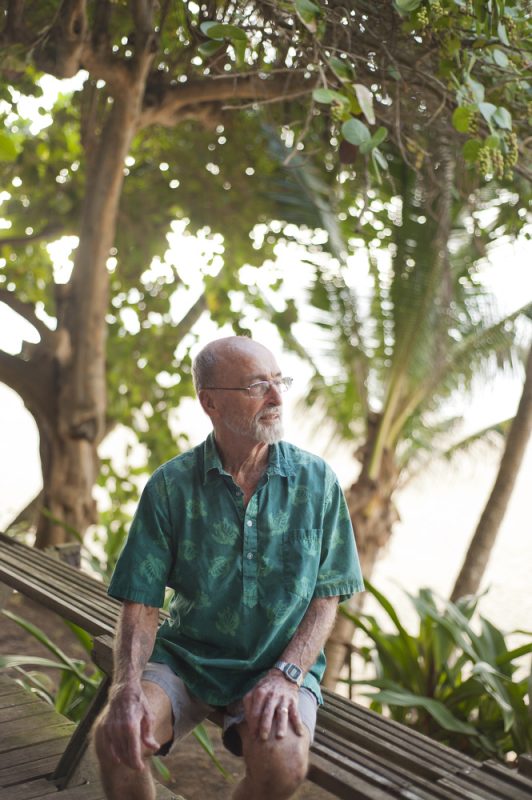
Warren Harlow on his porch, looking in the direction of Pipeline.
Harlow has been living for 54 years in the same house on Ke Nui Road on Hawaii’s North Shore, stockpiling memories of surfers brave or foolish enough to challenge Pipeline’s terrifying power. His property abuts the sand, with a porch overlooking a violent surf zone that can produce waves with 15-foot faces that break in shallow water on a coral reef. On really big days, the foundation of his house sometimes vibrates.
He remembers body-surfing Pipeline alongside the legendary surfer Gerry Lopez at a time when the wave was so uncrowded that bodysurfers and board riders could co-exist without conflict. He has stories about a young Laird Hamilton, who as a 5-year-old would venture into the churning ocean by tying a rope to his leg and attaching the other end to a concrete slab on the beach.
The neighborhood has changed since the early 1960s, of course. These days Harlow has a hard time keeping track of which corporate sponsor owns which of the nearby beach houses, or which house is hosting which party during the World Surf League’s famous Pipe Masters competition.
“I’m a little out of the loop in terms of getting invited to any of them,” he says.
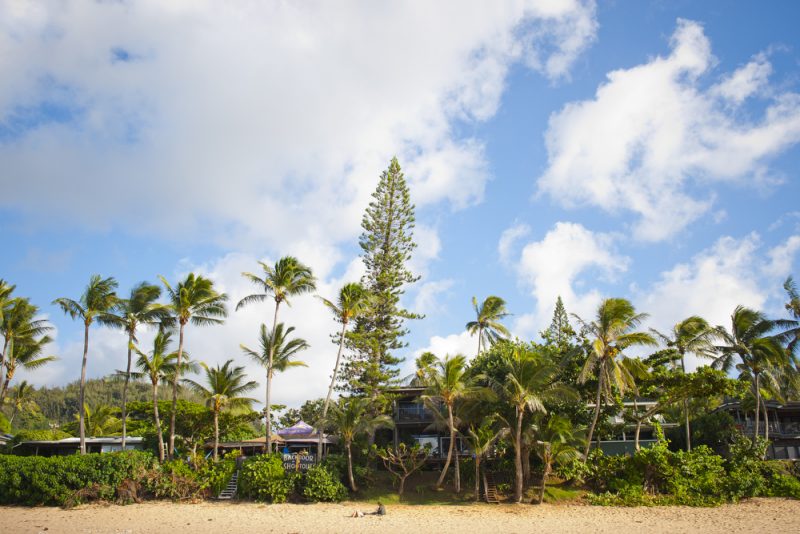
Warren Harlow’s house is behind the large tree. Photo: Elyse Butler
Harlow, who grew up in Manhattan Beach, Calif., was a civil engineer for the Navy at Pearl Harbor when he first moved to the North Shore specifically for the surf. In 1963 he and his wife, Colleen, bought what was then an empty lot on Ke Nui Road, paying $8,500 for the 6,000-square-foot piece of oceanfront property. (Next door to Harlow’s place is a 13,000-square-foot lot, including a 3-bedroom house and a 2-bedroom cottage, that is currently on the market for $20 million.)
They finished building their house in 1964 and have been living there ever since. They’ve been married 63 years.
On really big days, the foundation of his house sometimes vibrates.
Back in the day, most of their neighbors were enlisted personnel stationed at Schofield Barracks, a nearby Army installation, or weekend visitors from Honolulu. Few of them surfed. Most of Harlow’s pals lived inland and he’d routinely field calls from buddies looking for a surf report.
One friend would call fairly frequently. If Harlow wasn’t home, the guy would pepper Harlow’s wife with questions about what the ocean looked like. “He would couch his questions about surf size by asking her, ‘Well, how many refrigerators high is it?’” he recalled.
Even before settling into his new house, Harlow had earned a reputation on the North Shore as a big-wave charger and waterman. He remembers the first time he summoned the guts to paddle out in really big Pipeline surf. He caught an outside wave, probably in the 12-to-15-foot range.
“It was a really low slope, I was barely riding it, then all of a sudden it’s getting really, really steep,” he said. “As I approached the inside break, I eventually bailed out to keep from going over the falls and dying or whatever else might happen to me. But that was my first experience in really big Pipeline. And I never tried to ride the outside break again after that. It was a little too terrifying for me.”
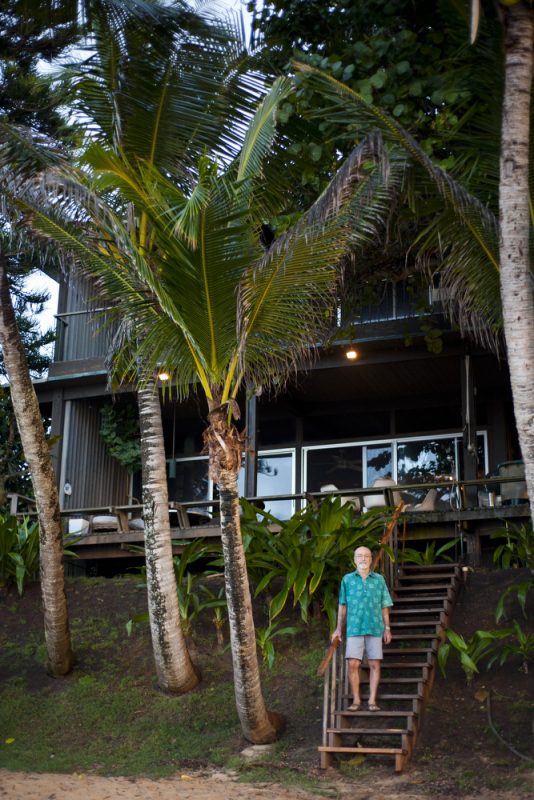
Warren Harlow, in front of his house. Photo: Elyse Butler
He preferred other spots, such as Sunset and Pupukea. He dropped in on some giant waves at Waimea Bay. He was content, on huge days at Pipeline, to stay on the beach, witnessing the exploits of barrel-riding pioneers such as Greg Noll, Butch Van Artsdalen and Lopez, who lived a few houses down the beach.
He and his wife befriended a couple named the Hamiltons, who lived a few houses away. Sometimes they’d babysit the couple’s son Laird, who had a habit of engaging in all sorts of wild stunts and crazy pranks. One time, Lopez wiped out on a Pipeline wave, then spent hours searching the beach for his board before discovering that Laird had buried it in the sand.
“In those days there were no lifeguards out here. So unless you wanted to turn a blind eye, you had to kind of be one occasionally.”
Because there were no lifeguards when Harlow first moved to the North Shore, he found himself occasionally sprinting down from his deck and plunging into the surf to rescue someone in trouble. He figures he’s aided in a half-dozen rescues over the years.
Many years ago, he took a CPR class and almost immediately was faced with the task of using CPR. At dawn one morning, a kid came racing to his house looking for someone to help a surfer who lay unconscious and unresponsive on the beach. Harlow rushed to the man’s aid.
“I remember my mind going completely blank when I was confronted with the need to apply my newfound knowledge,” he said. “But fortunately for him, all I did was turn him over and as I was trying to figure out what I was supposed to do first, he started sputtering and spitting up water and he came out of it pretty well.”
These days Harlow is less physically active than in his younger days, when his hobbies including windsurfing, sailing, cycling, scuba diving and competing in Iron Man competitions. He hardly ever surfs or bodysurfs anymore but still swims in the ocean during the calm summer months.
He retired from his engineering job at Pearl Harbor in 1994. Since then, he’s seen some of the kids in the neighborhood grow up to become famous, including the folk/pop singer Jack Johnson, whose parents lived down the beach, and the pro surfer Jamie O’Brien, who grew up in the house next door.
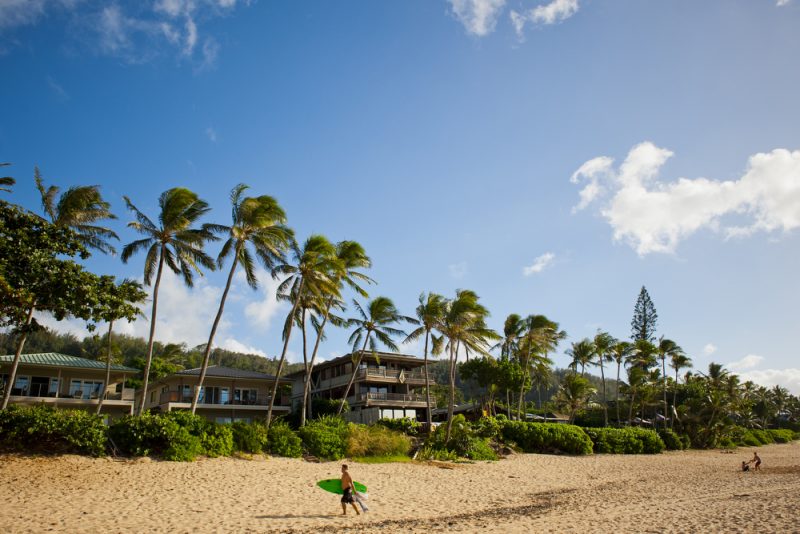
Warren Harlow’s block is now stocked with houses owned by the surf industry. Photo: Elyse Butler
He admits to getting annoyed every so often by the big parties, the crowds, the noise and the traffic, all of which are now unavoidable at Pipeline, especially during surfing contests and big swells.
But he’ll assure you there’s not a whole lot to complain about in his little corner of paradise.
“You just kind of roll with the punches,” he says.
Some years he watches the Pipe Masters competition, some years he doesn’t. As with the daily routines of so many people living on the North Shore, everything depends on how good the surf happens to be.
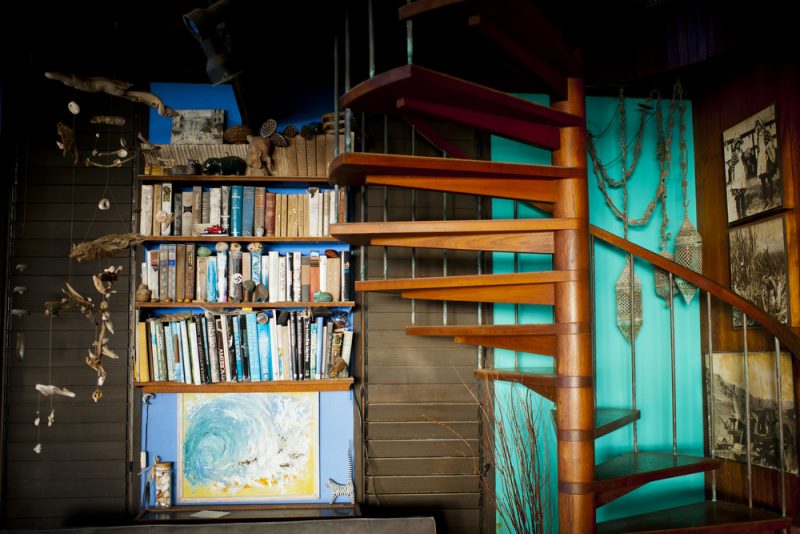
More than a half century of history can be found inside Harlow’s home.
